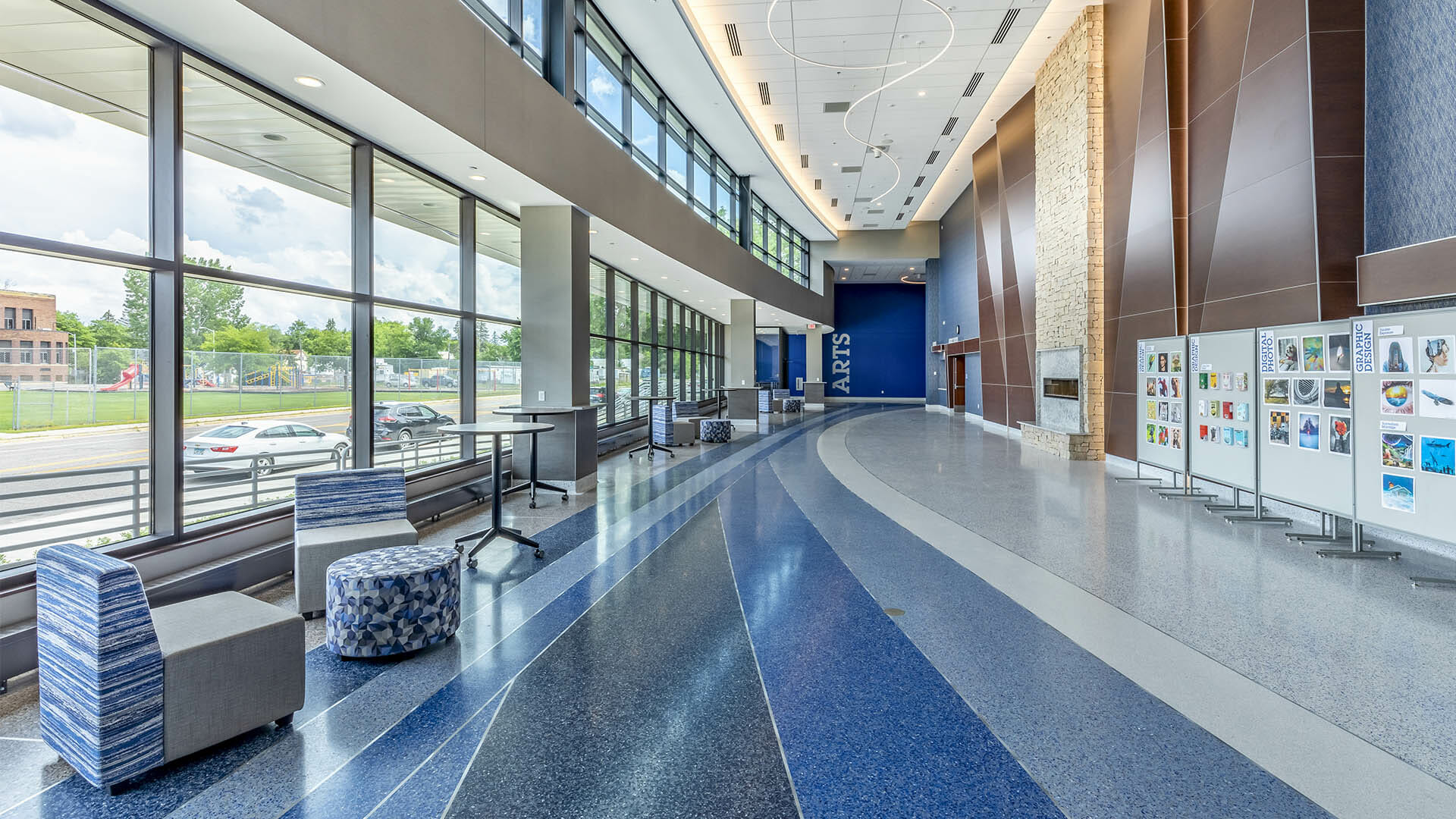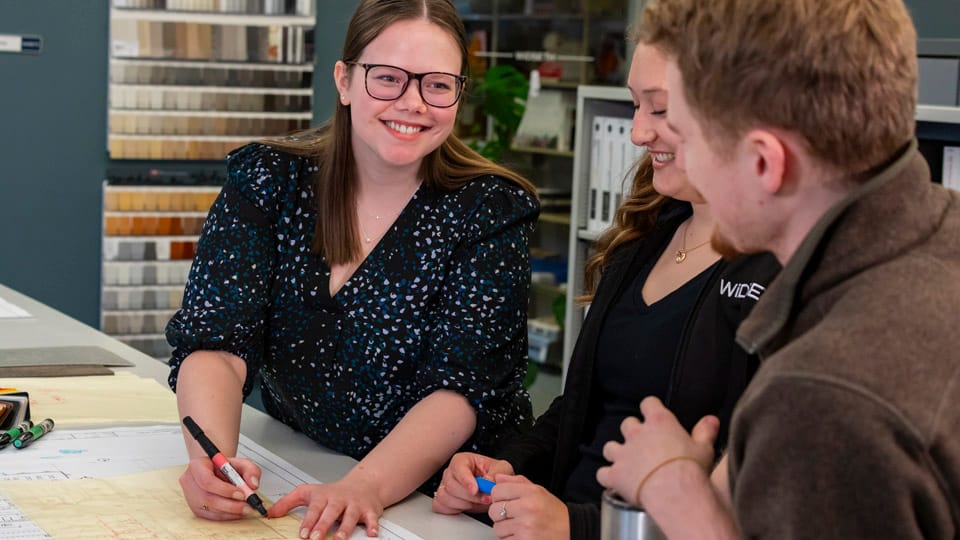While it may seem counterintuitive, working with an interior designer can actually help you save money. Designers can help you establish a realistic budget, prioritize expenses, and avoid costly mistakes. They have extensive product knowledge and can guide you towards cost-effective options without compromising on quality or aesthetics. When planning a new building or renovating an existing space—whether it’s a school, healthcare facility, city hall, or office—it’s important to understand the value an interior designer brings to your project.
1. Durability and Lifecycle Cost Management
Interior designers understand how different areas of a building will be used and maintained. By assessing traffic levels and cleaning requirements, they can recommend durable, easy-to-maintain finishes for high-use areas like lobbies, corridors, and restrooms. In contrast, less trafficked areas may benefit from more cost-effective materials. Designers help balance aesthetic appeal with functionality and maintenance demands, reducing long-term lifecycle costs while staying within budget.
2. Tiered Design Approach
Interior designers strategically apply a hierarchy of finishes to maximize visual impact while maintaining cost efficiency. High-visibility spaces receive more aesthetically elevated treatments, while secondary areas can incorporate simpler, budget-friendly materials. This approach allows your project to feel cohesive and polished without overspending.

Gichi-ziibi Center for the Arts in Brainerd, MN.
3. Branding Integration
Every building needs interior finishes—why not use them to reinforce your brand? Interior designers can thoughtfully integrate your business’s branding or institutional identity into the finishes, colors, and materials used throughout the space. This helps create a consistent and memorable environment for employees, visitors, and clients alike.
4. Smart Space Planning
Inefficient layouts waste space and hinder productivity. Interior designers optimize every square foot to support comfort, efficiency, and flexibility. Whether it’s designing a school that fosters learning, a healthcare facility focused on patient experience, or an office that boosts collaboration, interior designers ensure the space supports its purpose.
5. Code Compliance and Safety Considerations
Interior designers are trained in building codes, accessibility standards, and safety regulations. Their knowledge ensures that every space not only looks good, but also meets essential legal and functional requirements. From ADA compliance to fire-rated materials, designers play a vital role in keeping your project safe and up to code.

Blandin Foundation remodel in Grand Rapids, MN.
What’s the Difference Between Interior Decorators and Interior Designers?
While it might seem tempting to rely on your cousin who enjoys decorating, there are many things that separate interior decorators from interior designers. The main differences between them are the scope of work they can tackle and their qualifications.
Interior Decorator
- Primarily focuses on visual elements like furniture, color schemes, textiles, and accessories.
- Does not require formal training or certification, though some may take courses in decorating.
- Works within the existing space without making structural changes.
- Often hired to enhance aesthetics after a building or renovation is complete.
Interior Designer
- Focuses on both aesthetics and functionality of a space.
- Requires formal education (degree or certification) in interior design, often including architecture, space planning, and building codes.
- Can be involved in structural changes, such as removing walls, altering layouts, or integrating electrical and plumbing considerations.
- Works closely with architects and engineers to ensure spaces meet safety and usability standards.
In short, interior designers can decorate, but interior decorators do not design structural elements.
Investing in Design to Save in the Long Run
While hiring an interior designer may seem like an added expense, their expertise in budget management, efficiency, and problem-solving ultimately leads to substantial cost savings. From avoiding mistakes to selecting durable materials and improving energy efficiency, their role is essential in ensuring your project stays on track financially while delivering a functional and visually appealing space. If you want to make the most of your investment, partnering with an interior designer is a smart financial decision.




